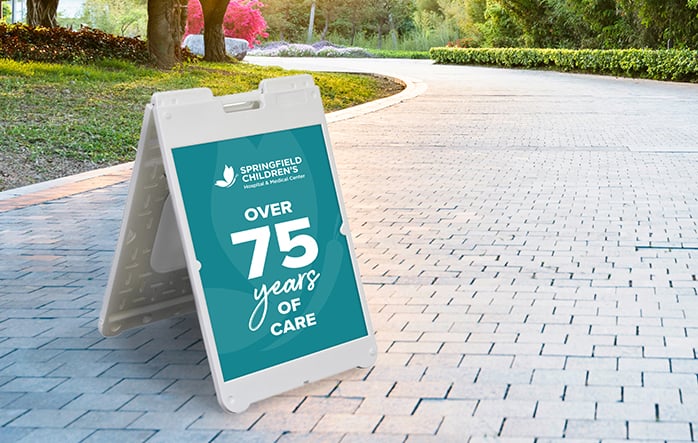Spending on healthcare topped $4.5 trillion in the U.S. during 2022, an average of over $13,000 per person. More importantly, healthcare as an industry isn’t just massive – it’s now being driven by the concept of “patient choice.” Direct-to-consumer healthcare companies such as Hims, Curology, NextMed and Vivante offer healthcare consumers a dizzying array of options.
In an environment like this, simply having a brand is no longer enough. You must deliver a unique experience that others cannot replicate. Only then does a brand deliver on its true purpose: to create economic value by generating higher returns and growth and mitigating risk.
What is a “brand?”
According to Investopedia, a brand is a business and marketing concept that helps people identify a particular company or product. Brands are intangible, they shape people’s perceptions of companies and their products, and they provide enormous value to the company – giving them a competitive edge over others in the same industry.
Then again, it’s just as important to define what a brand is not. Branding is not marketing, advertising or public relations, says brand interactive agency Parkerwhite in its “Branding in Healthcare” white paper. Rather, those activities are ways of communicating a brand to the marketplace. ParkerWhite defines a “brand” as “a recognizable identity that has a personality, values and traits. It is an active business asset that provides differentiation, shareholder value and longevity.”
Healthcare as a commodity
If you’ve been in the healthcare space for any length of time, you’ve no doubt witnessed dramatic changes, chief among them that healthcare is becoming more of a commodity. While the word “commoditization” has a threatening ring to it, the concept represents a real positive for patients and providers alike. Noted healthcare industry blogger Colin Hung had this to say in his piece titled “Commoditization of Healthcare.”
Is this drive to commoditization in healthcare a bad thing? I believe the exact opposite. The drive to commoditize certain aspects of healthcare is good thing and in some cases it is an imperative. If healthcare was more like a commodity, it would mean that we had a uniform and universally accepted definition of the end product. Imagine a world where the definition/output of a knee replacement was as commonly accepted by all healthcare providers as a barrel of crude oil is by gas producers. A commoditized healthcare world would mean we have universal standards of quality, well defined treatment workflows and price transparency. Who wouldn’t want that for healthcare?
Why healthcare branding strategies are so important
So, while commoditization may ultimately be a good thing for healthcare in general and patients as a whole, it poses a daunting challenge for individual healthcare systems and provider networks. If the service you provide becomes more uniform and predictable, why would a patient choose your hospital or clinic over someone else’s? As the healthcare industry marches toward commoditization, it’s critical that you revisit your branding strategy for these three reasons:
1 - Competition is coming from all directions
Today, healthcare organizations face more competition than ever before and not just from local providers who offer similar services. Disruptive technology, alternative options and facilities outside of the U.S. can threaten traditional healthcare organizations. The increase in mergers, acquisitions and partnerships is another reason to ensure your brand is strong, consistent and distinct, allowing you to bring value to the table.2 - The marketplace is consumer-driven
Individuals are now responsible for a greater share of their personal healthcare costs, making them more selective about which providers and hospitals they choose. Online research about healthcare costs, experiences and satisfaction has never been more accessible, meaning that consumers are more knowledgeable and have higher expectations than ever before.3 - Recruiting and retention are key to sustained success
Your brand attracts not only prospective patients but also doctors, nurses, physician assistants and other clinical staff members. To maintain a competitive edge talent-wise, your brand must convey trust, security and stability to prospective and tenured employees.What steps can you take today?
First and foremost, understand what makes you different — what separates you from the competition. One recommendation is to aim for distinctiveness, not merely differentiation. When someone mentions your brand name, what do you think follows in the conversation? If it’s not what you believe your brand does or stands for, you might need to rethink your marketing efforts. It must also be rooted in truth and reality. There is an old saying in the advertising industry that “nothing kills a bad product faster than good advertising.” If you claim to be something that you are not, patients will remember and form a lasting negative impression of your brand.
Once your brand value proposition is identified and clarified, execute consistent branding across all channels and to all segments of your audience (e.g., consumer and professional). This includes building a clear visual identity that is reinforced consistently in patient education materials, marketing collateral, apparel and signage. Train your employees to be brand ambassadors so that they deliver on your brand’s promise, which in turn leads to consistency among patient experiences. Over time, these experiences will build your brand’s reputation and help to establish it as trustworthy, credible and valuable.









